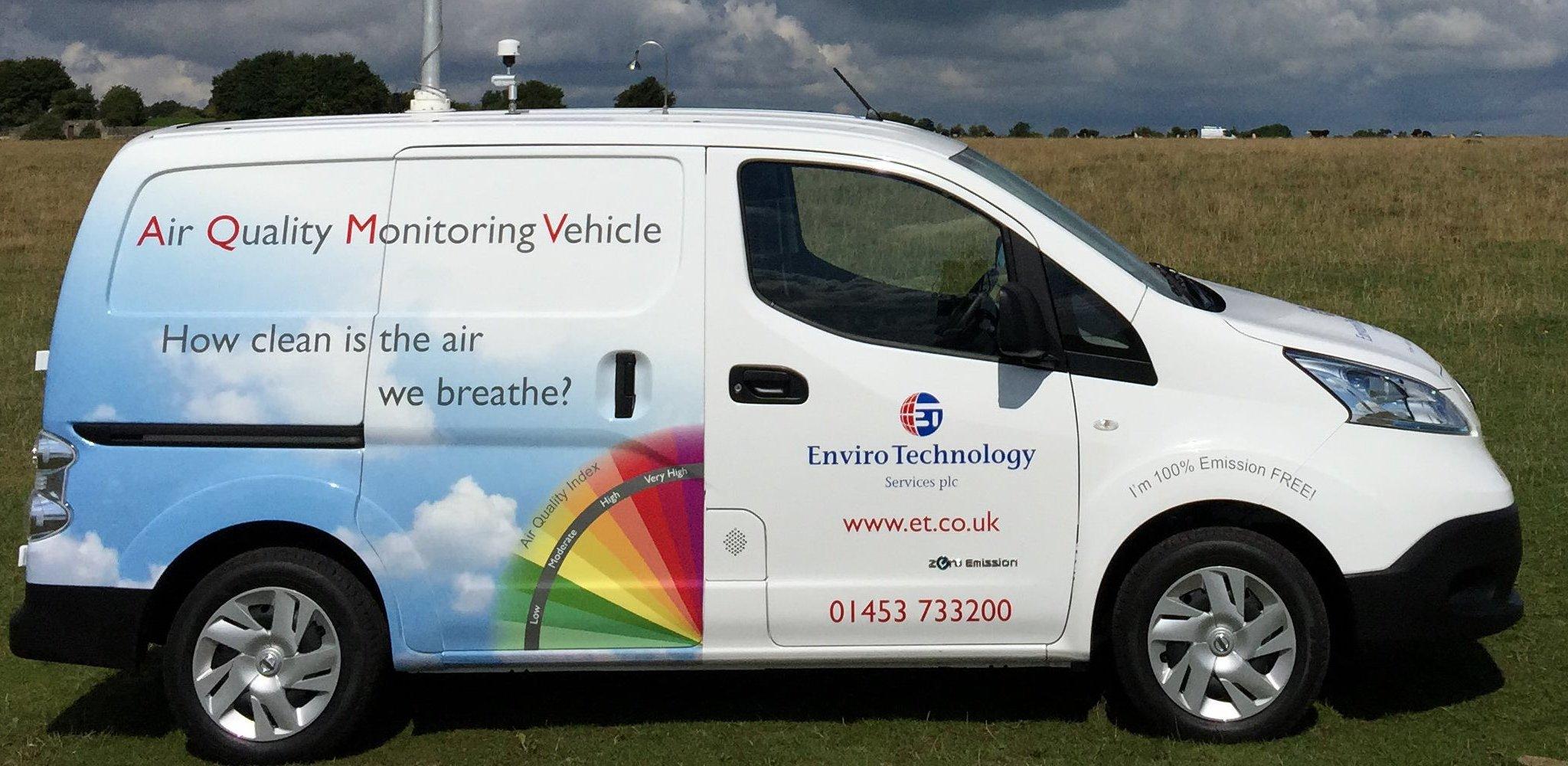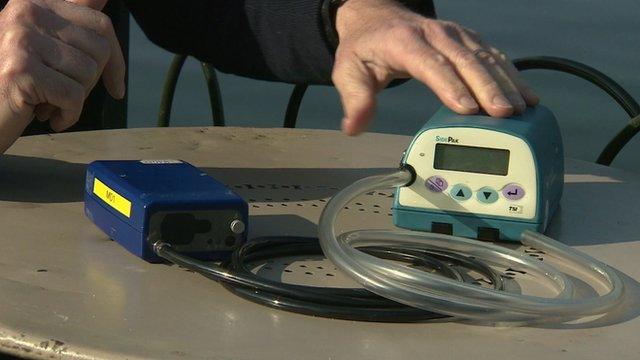Drivers 'exposed to highest levels of pollution'
- Published
- comments

The smogmobile can measure NO2 levels while on the move, and a range of other pollutants
What's the best way to avoid air pollution travelling in a city? Walking, cycling or in a vehicle?
It's a question I put a few months ago when testing some mobile pollution monitors along the busy Brompton Road in London's Knightsbridge.
The answer then was pretty categorical: being a car driver was best.
Not exactly the most environmentally friendly message - to avoid air pollution just stay in your polluting vehicle.
Environmental health experts at King's College London told me the low readings of pollution in my car were probably due to it having good air filters and were at odds with their usual findings - that pollution inside vehicles was more often worse than that outside.
The handheld monitors I used could test only for particulates - the sooty debris that is emitted from vehicle exhausts.
They could not detect nitrogen dioxide - NO2. Within cities, diesel vehicles are the main culprits for this invisible toxic gas.
For the first time NO2 can be measured while on the move - in a mobile air quality monitoring vehicle dubbed the 'smogmobile'.
Operated by UK firm Enviro Technology Services - the electric no-emissions vehicle can monitor NO2, particulates, ozone, carbon dioxide and methane.
Furthermore, it can switch every minute between measuring NO2 levels outside the vehicle, to those inside.
On a recent trip from Reading to central London, the smogmobile found levels of nitrogen dioxide were on average 21% higher inside - with the windows shut - than outside the vehicle.
I went for a drive in the smogmobile - in very heavy London traffic - from Broadcasting House, to Parliament Square and finally over the river to the South Bank.
The smogmobile is a two-seater van - with inlets on the roof, which 'sniff' the air for pollutants, and a lot of gadgetry and recording equipment in the rear.
In the front cabin there is a second NO2 inlet as well as a hand-held particulates monitor.
On our journey the levels of NO2 and particulates were roughly similar inside and out, but there were several pollution peaks within the vehicle.
One of these occurred when we were stuck behind an old-looking London tour bus.
I couldn't smell or see any pollution, but the levels of NO2 shot up, shown clearly on a tablet screen recording the levels in real time.
Pea-souper
Duncan Mounsor, the MD of Enviro Technology Services who was driving the smogmobile told me: "People don't realise the dangers of air pollution these days, because you can't smell it, taste it or touch it. But it is still damaging for your health."
Recent research suggests that NO2 is thought to contribute to 23,500 deaths a year in the UK, with all but five regions in the UK breaching EU safety limits.
Remarkably, parts of London breached the entire annual EU safety limit for NO2 after just eight days of January 2016.
Particulates, which can lodge in the lungs, are thought to contribute to around 29,000 deaths a year.
These figures are simply estimates, and can't simply be added together, but air quality experts believe that pollution does lead to tens of thousands of excess deaths a year in the UK.
It is worth pointing out that air quality now is vastly better than the 1950s when pea-souper smogs were common.
Smog - a mixture of smoke and fog - was responsible for thousands of deaths a week.
But reductions in air pollution have stalled. In September 2015 the government released a draft air quality strategy saying it expected eight regions of the UK - including London, Birmingham, Leeds and Southampton - to still be in breach of EU limits for NO2 by 2020.
The government's proposals for improving air quality include restrictions on diesel cars, including charging drivers for entering "clean air zones" or even banning them.
At the end my journey I visited Dr Ben Barratt, lecturer in Air Quality Science at King's College London.
He told me: "There is a growing awareness of the dangers of air pollution. As well as respiratory problems it can have effects on mental health, cardiovascular conditions and child development. So the urgency behind this issue is becoming much greater".
Exercise
The UK has a network of 133 static air quality monitoring stations, whose data are modelled to estimate pollution levels across the country.
They can show trends in pollutions levels over time. But their lack of mobility means that pollution levels can be very different just a few metres from their location.
By contrast the smogmobile can reflect the pollution exposure of commuters.
Duncan Mounsor said the smogmobile would give local authorities a "powerful tool to plan action to clean up our air and tackle one of the greatest public health challenges."
The NO2 measurements from inside the smogmobile promote green commuting with the message that if you drive your polluting car into the city, not only are you harming the environment but you maybe damaging your health.
Ben Barratt put it like this: "It's better for the environment if you leave your car at home and better for your health. It exposes you to less air pollution, you're not contributing to the problem, and you are getting the benefits of exercise."
- Published6 October 2015
- Published7 October 2015
